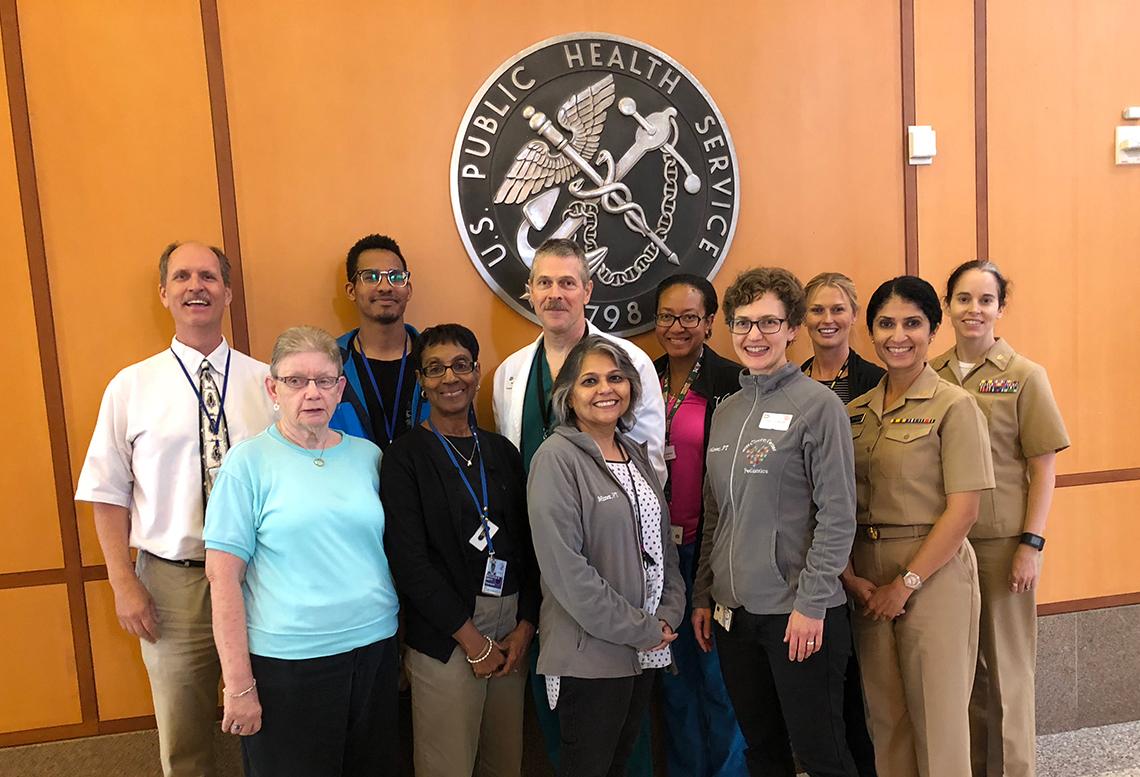PT in Spotlight
National Physical Therapy Month Observed

October is National Physical Therapy Month. Physical therapists, including those at the Clinical Center, are licensed medical professionals who work with patients following an illness or injury and provide interventions to allow patients to be as independent as possible.
Physical therapists work in a variety of health care settings including outpatient clinics, private practices, hospitals, rehabilitation facilities, nursing homes, home health care, sports and fitness settings, schools, hospice facilities, occupational settings, government agencies and research centers.
Therapists treat patients with diverse illnesses and injuries, including helping an infant meet developmental milestones, rehabilitating a torn ACL in a high school soccer player and assisting a 30-year-old recovering from a traumatic brain injury or an older adult recovering from a hip replacement. Physical therapists help people maximize quality of life by providing a holistic approach through addressing physical, psychological, emotional and social well-being.
Additionally, physical therapists are helping combat the opioid epidemic. Americans continue to be prescribed and misuse opioids at an alarming rate. Physical therapy is a safe and effective alternative to opioids for treatment of chronic pain conditions. The CDC Guideline for Prescribing Opioids for Chronic Pain states “many non-pharmacologic therapies, including physical therapy…can ameliorate chronic pain.”
Furthermore, “there is high-quality evidence that exercise therapy (a prominent modality in physical therapy) for hip or knee osteoarthritis reduces pain and improves function immediately after treatment and that the improvements are sustained for at least 2-6 months. Previous guidelines have strongly recommended aerobic, aquatic and/or resistance exercises for patients with osteoarthritis of the knee or hip. Physical therapists partner with patients, their families and other health care professionals to manage pain, often reducing or eliminating the need for opioids. Research has shown that a simple education session with a physical therapist can lead to improved function, range of motion and decreased pain. Before you agree to a prescription for opioids, ask if physical therapy might be right for you.”—Zavera Brandon, Kerry Quinn
